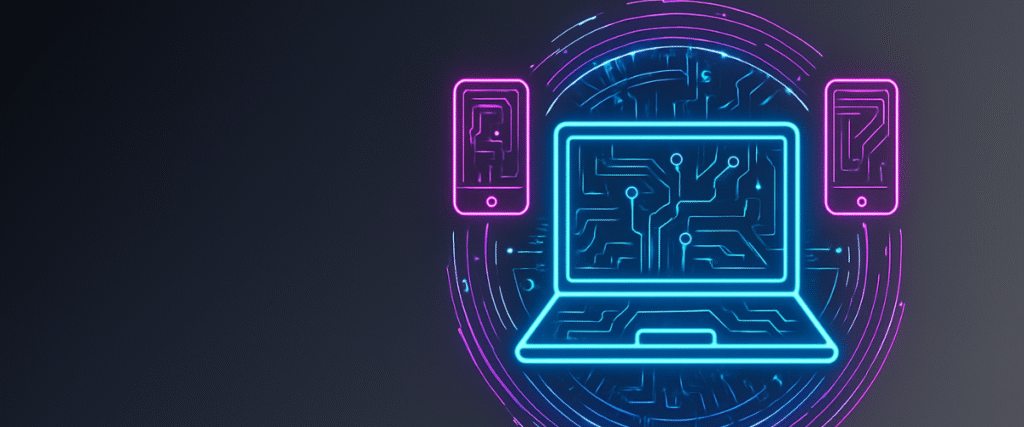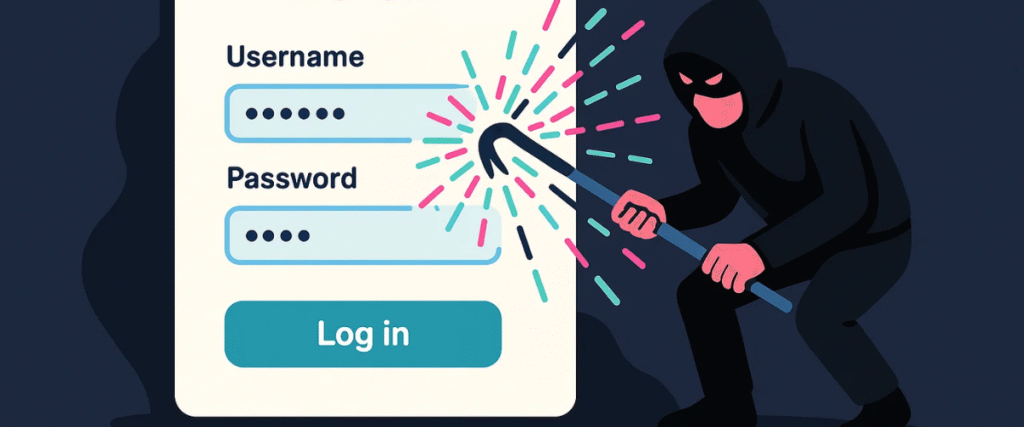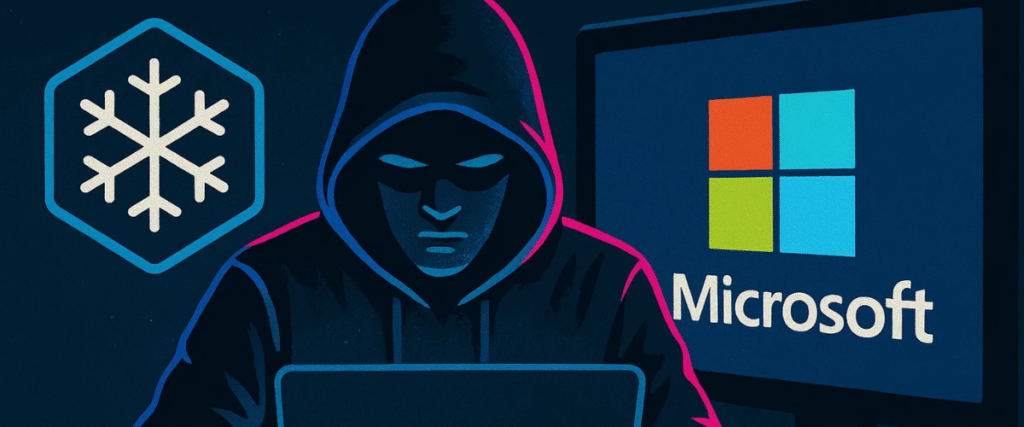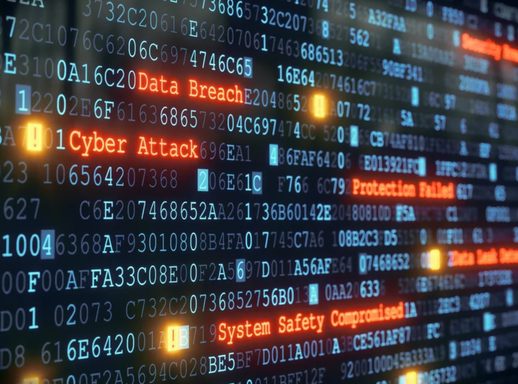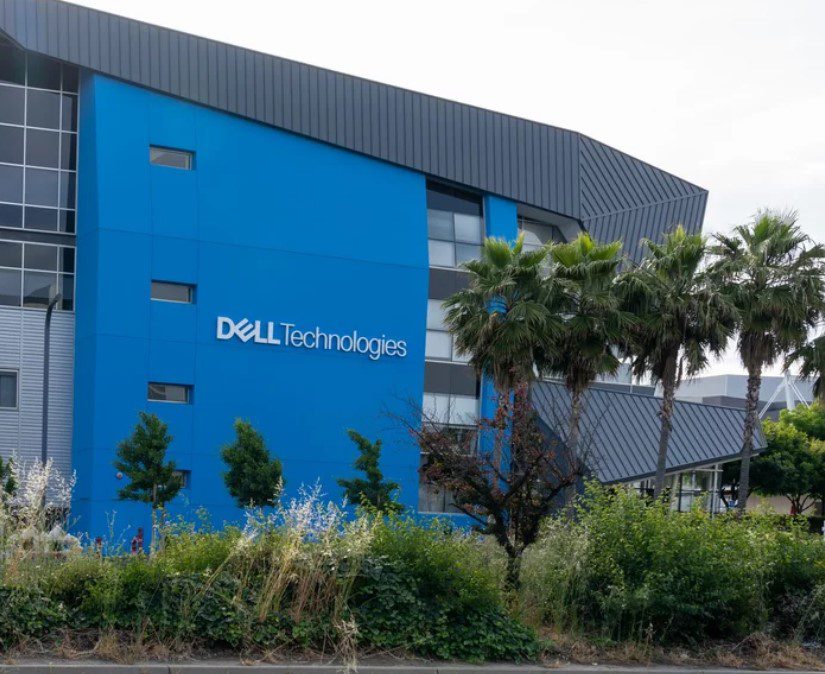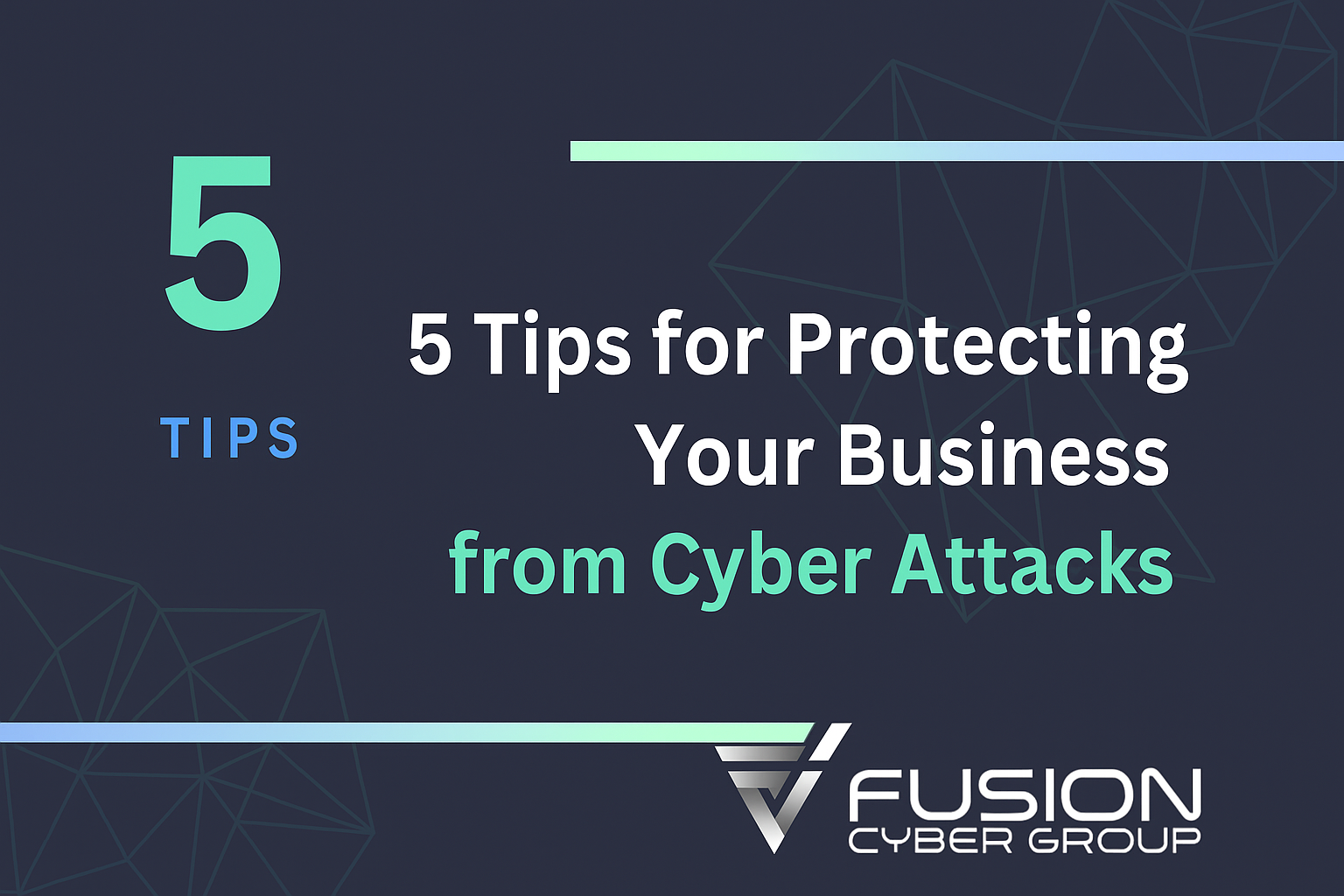
Tip 1 — Passwords & 2FA: Lock the Front Door
Why it matters
Logins are the new perimeter. Most attacks start by stealing credentials or tricking someone to approve a login. Strong passwords help, but multi-factor authentication (MFA), single sign-on (SSO), and privileged access management (PAM) stop attackers from moving freely.
Risks if ignored
- Business email compromise (BEC), fake invoices, and unauthorized payments.
- “Password reuse” cascades: one breach unlocks many apps.
- Admin accounts abused to disable security or deploy ransomware.
- Insurance claims denied when MFA was “available but not enforced.”
What good looks like
- Passwords: 16+ character passphrases; unique per site; stored in a business password manager with shared vaults and audit logs.
- MFA: Enforced on email, VPN/remote access, finance, HR, and all admin portals. Prefer phishing-resistant factors (app prompts with number matching or FIDO2 security keys) over SMS.
- SSO: Centralize logins via Microsoft 365/Google Workspace/Okta; reduce shadow IT and improve offboarding.
- PAM: Separate admin accounts, just-in-time elevation, and session recording for high-risk tasks.
- Access reviews: Quarterly checks of who has access to what; remove dormant accounts in 24 hours.
Action steps
- Roll out a password manager (team vaults for finance, HR, operations).
- Enforce MFA tenant-wide; require app-based prompts or keys for executives and admins.
- Migrate top 10 apps to SSO; disable legacy/basic authentication.
- Create separate admin accounts; block email and browsing from them.
- Implement approval rules for vendor banking changes and payments ≥ CAD $10,000.
- Publish a 2FA fatigue guideline: if multiple prompts appear unexpectedly, deny and report.
Owner / Timeline
- Owner: IT lead/MSP; finance for payment controls.
- Timeline: Weeks 1–2: password manager + MFA; Week 3: SSO for top apps; Week 4: PAM basics + access review cadence.
Tip 2 — Keep Systems Updated: Patch What You Own
Why it matters
Attackers love known, already-fixed flaws. Patching is cheap risk reduction. The barrier is usually asset visibility and prioritization, not technology.
Risks if ignored
- Ransomware exploiting months-old vulnerabilities.
- Outdated VPNs, firewalls, and NAS devices used as entry points.
- Missed firmware updates on routers, switches, and printers enabling lateral movement.
- Compliance and cyber-insurance penalties after an avoidable breach.
What good looks like
- Asset inventory: A living list of laptops, servers, network devices, SaaS, and cloud resources—owner, location, and criticality.
- Automated patching: OS, browsers, and third-party apps managed centrally with success/failure reporting.
- Risk-based prioritization: Critical internet-facing and high-value systems patched within 7 days; others within 30 days. Emergency patches in 72 hours.
- Firmware & network: Quarterly updates for firewalls, VPNs, Wi-Fi, and printers; remove end-of-life gear.
- Vulnerability scanning: Monthly authenticated scans and after major changes; trending of exposure, not just counts.
- Change windows: A standard maintenance window (e.g., first Wednesday 20:00–23:00) with rollback plans.
Action steps
- Turn on auto-update for OS and browsers; standardize versions.
- Deploy an RMM/endpoint tool for patching and reporting.
- Build the asset inventory from sign-in logs, DHCP, and device management (include remote staff).
- Scan for vulnerabilities monthly; track SLA compliance and exceptions.
- Replace or isolate end-of-life systems; apply compensating controls until retired.
- Back up before patching servers; validate services after reboot.
Owner / Timeline
- Owner: IT lead + SOC oversight.
- Timeline: Week 1: auto-updates; Week 2: RMM + first patch window; Month 2: full inventory + scanning and SLA report.
Tip 3 — Educate Your Team: People Are the First Line of Defence
Tip 4 — Backups That Actually Restore: Your Safety Net
Tip 5 — Fit-for-Purpose Security Controls: Get Expert Help
Featured links:
Baseline Cybersecurity Controls for SMBs
SMB Cybersecurity Risks in 2025
FAQ:
Are SMBs really prime targets for cyberattacks?
Yes — SMBs are often the first targets. Criminals know that smaller firms usually lack the budget or staff for robust defenses, making them easier to breach. Nearly 70% of SMBs reported at least one cyber incident last year.
Attackers also see SMBs as gateways into larger supply chains. By compromising a smaller vendor, they can often access enterprise networks upstream. For that reason, no business is “too small” to be attacked — in fact, small size often increases the risk.
What types of cyberattacks should SMBs be most concerned about?
The most common and damaging threats include ransomware, data breaches, phishing, and denial-of-service (DoS) attacks. Each type can cause major disruption: ransomware locks you out of systems, phishing tricks employees into giving away credentials, data breaches expose sensitive information, and DoS attacks shut down websites or services.
What unites them is that attackers only need one weak spot. A single careless click, unpatched system, or stolen password can open the door to a full-scale breach.
How much does it actually cost to recover from a cyberattack compared to prevention?
Recovery costs far outweigh prevention — often by a factor of ten. Beyond ransom payments, businesses face downtime, lost revenue, fines, and long-term reputational damage. Many SMBs never fully recover.
On the other hand, prevention — regular patching, monitoring, and training — is far less expensive. Every dollar invested in proactive security saves many more in avoided losses.
What can SMBs do if they don’t have the budget or staff for full in-house cybersecurity?
Most SMBs can’t afford a dedicated, around-the-clock security team. That’s why many partner with Managed Security Service Providers (MSSPs) or Managed Service Providers (MSPs).
These partners provide enterprise-grade monitoring, rapid response, and compliance support at a fraction of the cost of building an in-house team. It’s the most practical way to match the sophistication of modern attackers without breaking the budget.
Our Cybersecurity Guarantee
“At Fusion Cyber Group, we align our interests with yours.“
Unlike many providers who profit from lengthy, expensive breach clean-ups, our goal is simple: stop threats before they start and stand with you if one ever gets through.
That’s why we offer a cybersecurity guarantee: in the very unlikely event that a breach gets through our multi-layered, 24/7 monitored defenses, we will handle all:
threat containment,
incident response,
remediation,
eradication,
and business recovery—at no cost to you.
Ready to strengthen your cybersecurity defenses? Contact us today for your FREE network assessment and take the first step towards safeguarding your business from cyber threats!









